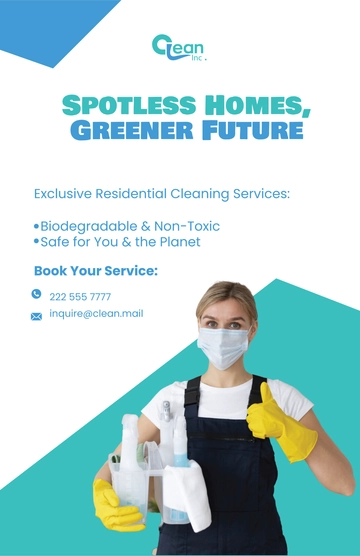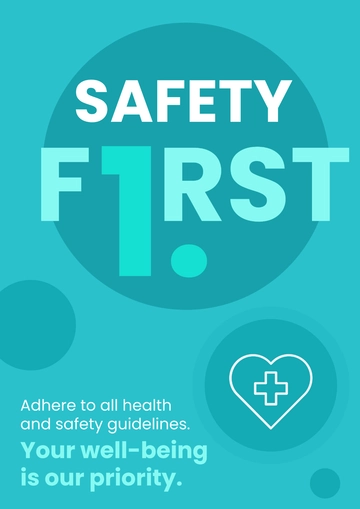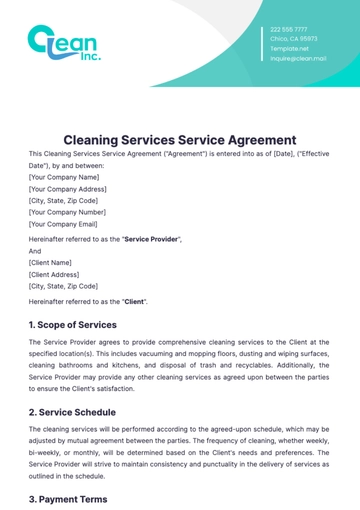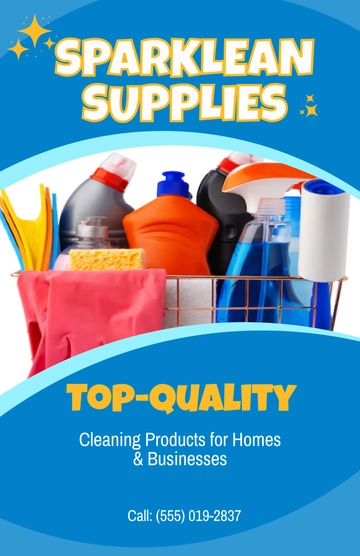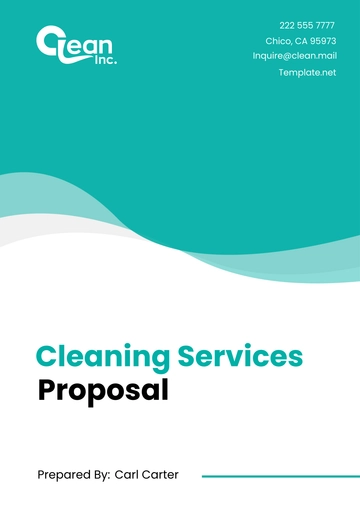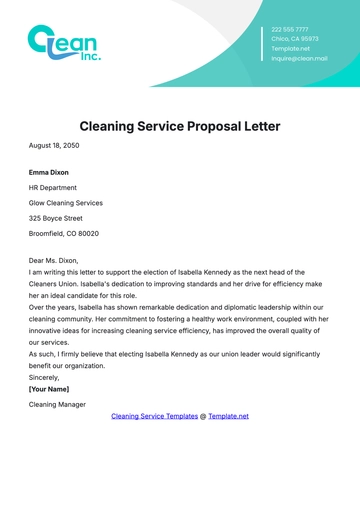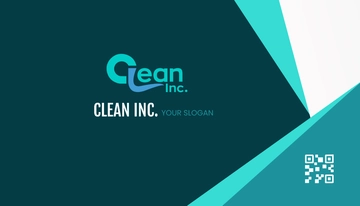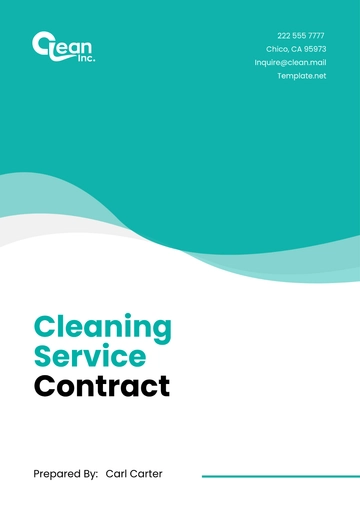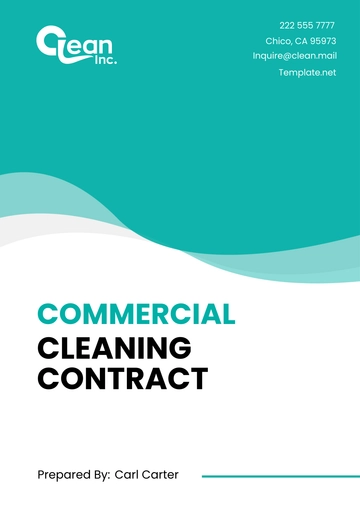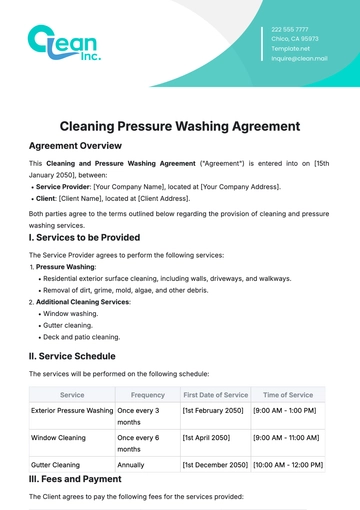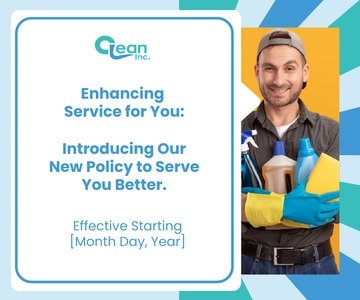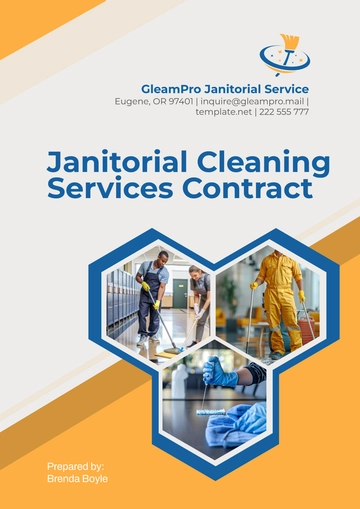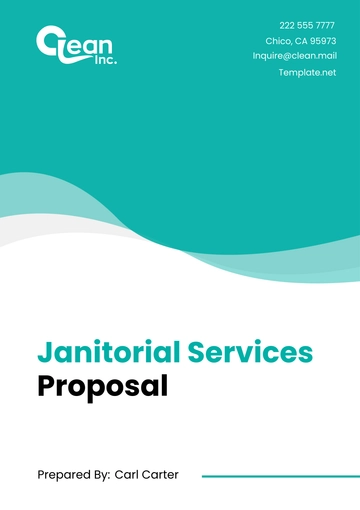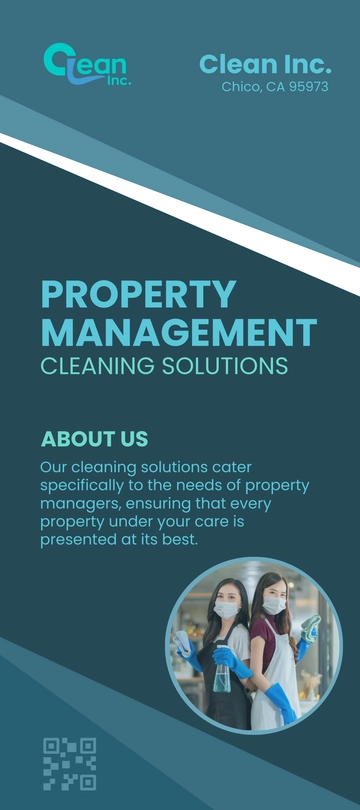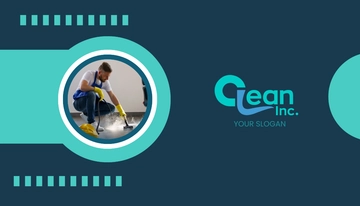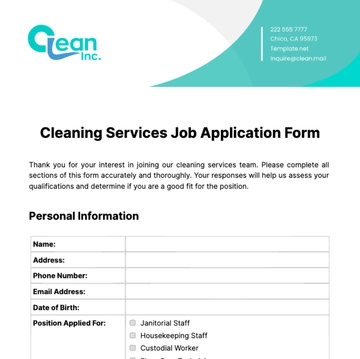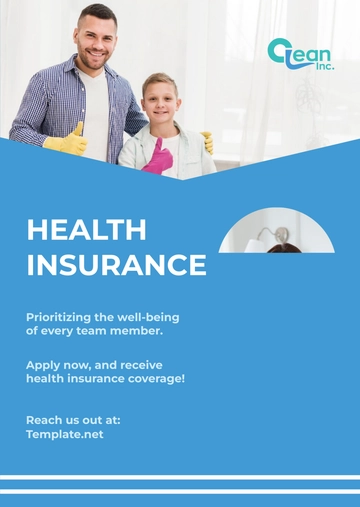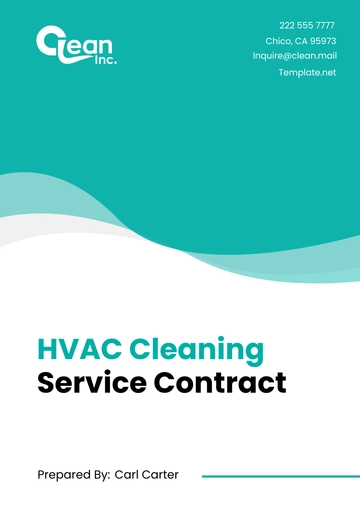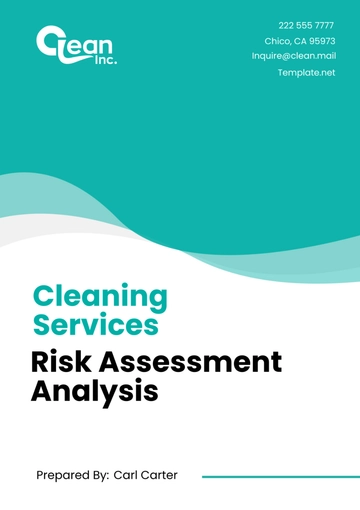Free Cleaning Services Online Marketing Guide
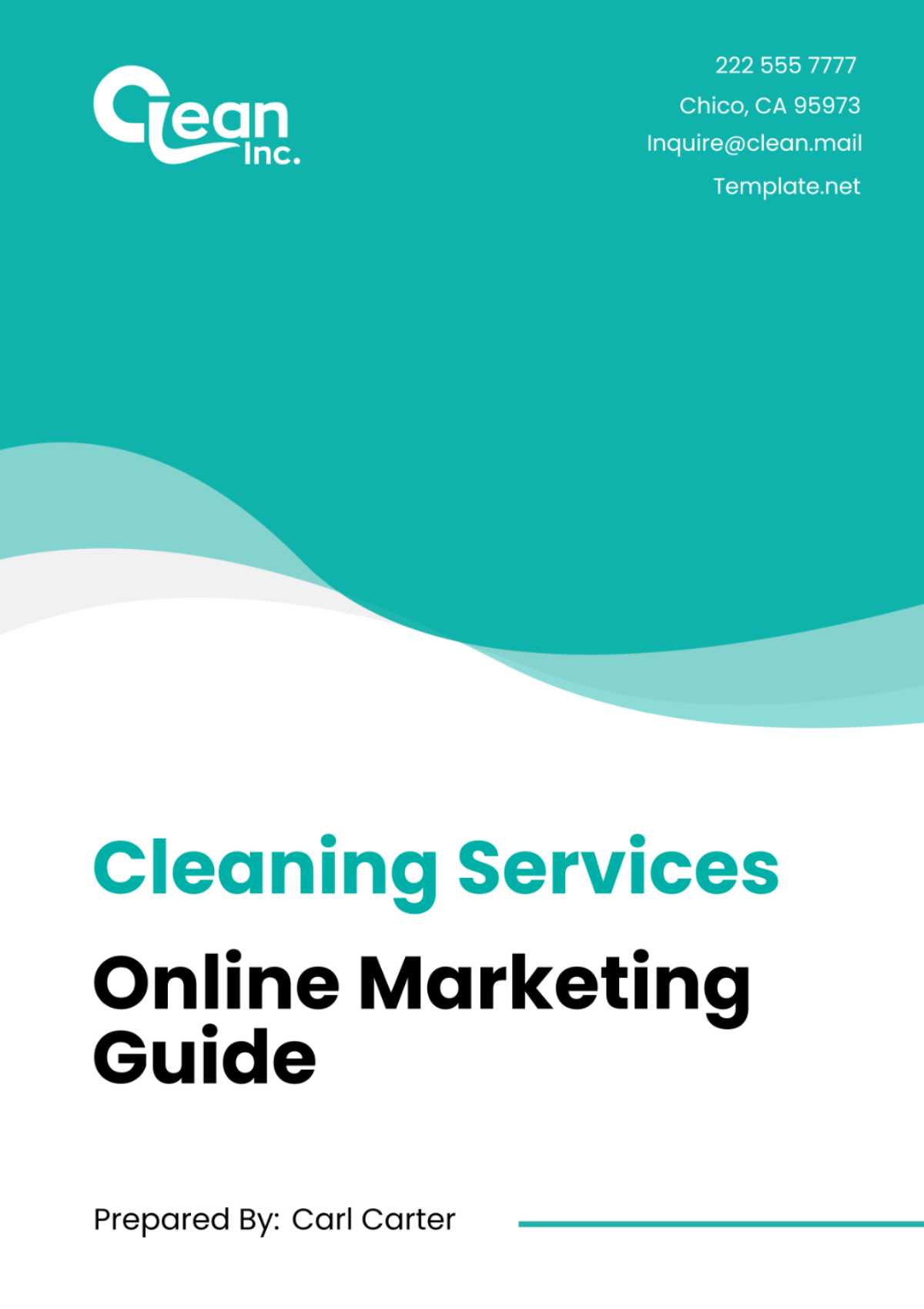
I. Introduction to Online Marketing
A. The Digital Shift
The New Search Ritual: Gone are the days of flipping through hefty phone books or relying solely on word-of-mouth recommendations. Today, consumers turn to search engines—primarily Google—to find local services. When someone types “professional cleaning services near me” into the search bar, our business needs to be prominently displayed. It’s not just about being listed; it’s about being visible and accessible when potential clients seek solutions.
Your Virtual Showcase: Imagine [Your Company Name]'s website as a grand showroom. Each page, each piece of content, is a display. Clients browse, evaluate, and decide. Our online presence isn’t a mere formality; it’s our digital handshake—a chance to make a lasting impression that resonates beyond the pixels.
B. Trust, Credibility, and Content
Trust Matters: Cleaning services operate in intimate spaces—homes, offices, and commercial buildings. Trust is the currency of this industry. Clients invite us into their personal sanctuaries, entrusting us with cleanliness and order. Our online presence must exude reliability, professionalism, and integrity. When clients visit our website, they’re not just seeking services; they’re seeking peace of mind.
Content Marketing: Imagine our content as a bridge connecting us to our audience. Through valuable content—whether blog posts, videos, or social media updates—we build credibility. Share success stories, offer practical tips, and address common cleaning conundrums. Content isn’t just about algorithms; it’s about building trust, one well-crafted sentence at a time.
C. Standing Out Amid the Clamor
Quality Over Quantity: In a sea of information, quality floats to the surface like a polished gem. [Your Company Name]'s content should be a beacon—a lighthouse cutting through the fog of mediocrity. Don’t settle for generic advice; dive deep. Craft informative, engaging pieces that educate, entertain, and resonate with authenticity. Whether it’s unraveling the science behind eco-friendly cleaning products or sharing heartwarming client testimonials, prioritize substance over fluff.
Be the Solution: When potential clients search for cleaning services, our content should be their compass. Whether they seek stain removal tips, eco-friendly cleaning hacks, or insights into commercial sanitation, our website should provide answers. Be the solution they didn’t know they needed. Imagine our content as a helpful guide, gently leading them toward a cleaner, brighter reality.
II. Online Content Marketing Best Practices
[Your Company Name]'s content marketing strategy goes beyond mere posting—it’s about strategic thinking, creativity, and delivering value. Here’s how we can elevate our game:
A. Blogging and Informative Content
Educate and Entertain: Our blog posts should be a delightful blend of education and entertainment. Dive deep into topics like “The Science of Spotless Surfaces” or “The Art of Odor Elimination.” Share practical tips, infuse humor, and make our readers feel smarter after each read.
Storytelling: Behind every clean space lies a story. Share success stories of challenging cleaning tasks conquered, heartwarming interactions with clients, and the transformation of chaotic spaces into havens of order. Our blog is our storytelling canvas; let’s paint vivid narratives.
SEO Mastery: Keywords aren’t just buzzwords; they’re our secret allies. Research relevant keywords related to cleaning services, weave them naturally into our content, and watch our website climb search engine rankings. Remember, SEO isn’t about gaming the system; it’s about speaking the language of our clients and Google simultaneously.
Guest Posts and Collaborations: Imagine our blog as a lively party, and guest posts are our intriguing guests. Collaborate with industry experts, fellow cleaning professionals, or even clients. Guest posts expand our reach, introduce fresh perspectives, and foster valuable connections.
Interactive Content: Beyond traditional blog posts, explore interactive formats. Quizzes like “What’s Your Cleaning Personality?” or infographics on “10 Must-Have Cleaning Tools” engage our audience. Imagine our blog as an interactive hub where readers learn, participate, and share.
B. Social Media Engagement
Platform Selection: Not all social media platforms resonate equally with our audience. Facebook, Instagram, LinkedIn, Twitter—they each have unique vibes. Let’s choose wisely based on our target clients. Imagine our social media profiles as cozy rooms where clients drop by for a chat. Each platform has its purpose; let’s tailor our content accordingly.
Visual Storytelling: Photos of our sparkling clean spaces, time-lapse videos capturing our efficient processes, and client testimonials resonate. Show, don’t just tell. Imagine our social media profiles as windows into our world, inviting clients to step inside.
Engage Authentically: Social media isn’t a monologue; it’s a dialogue. Respond to comments, messages, and inquiries promptly. Build relationships. Imagine our brand as a friendly neighbor, always ready for a chat over the virtual fence.
Content Calendar: Imagine our social media strategy as a well-organized calendar. Plan ahead—what themes, events, or promotions can we highlight? Consistency matters; let’s avoid sporadic bursts of content. Imagine our content as a symphony; each post plays a unique note, contributing to the overall harmony.
Hashtag Magic: Imagine hashtags as magical spells. Use them strategically. Research trending and relevant hashtags in our industry. Don’t overdo it; quality trumps quantity. Imagine our posts as treasure chests; hashtags unlock hidden gems.
User-Generated Content: Imagine our clients as co-creators. Encourage them to share their cleaning success stories, before-and-after photos, or creative cleaning hacks. Repost their content with gratitude. Imagine our social media as a community bulletin board; clients’ voices matter.
Live Sessions and Q&A: Imagine our social media as a live event venue. Host Q&A sessions, share behind-the-scenes glimpses, and demonstrate cleaning techniques. Live videos create an authentic connection. Imagine our audience as curious attendees; let’s engage them.
Collaborations and Takeovers: Imagine our social media as a collaborative canvas. Partner with influencers, local businesses, or industry experts. Takeovers—where someone else manages our account for a day—bring fresh perspectives. Imagine our collaborations as duets; together, we create harmonious content.
C. Email Marketing
Build an Email List: Collect emails like precious gems. Offer incentives—a free cleaning checklist, a downloadable e-book on green cleaning, or exclusive discounts. Our newsletters should feel like personalized letters from a trusted friend.
Regular Newsletters: Our newsletters aren’t spam; they’re curated gifts. Share cleaning hacks, introduce team members, and announce special offers. Imagine our emails as warm invitations to join our cleaning community.
III. Measuring Success of Online Content Marketing
Measuring the impact of [Your Company Name]'s content marketing efforts is essential for refining our strategies and maximizing return on investment (ROI). Now, we’ll delve into our critical measurement components:
Metric | Details |
|---|---|
Traffic | The number of visitors to our website or specific content pieces. |
Conversion Rate | The percentage of visitors who take a desired action (e.g., sign up, download, make a purchase). |
Engagement Metrics | Includes time spent on page, bounce rate, and social media interactions. |
Lead Generation | The number of leads generated through content (e.g., form submissions, newsletter sign-ups). |
Cost Per Acquisition | The cost incurred to acquire a new customer through content marketing efforts. |
Return on Investment | The ratio of revenue generated from content marketing to the cost of creating and distributing it. |
Traffic serves as the lifeblood of our digital presence. It represents the number of visitors arriving at our website or specific content pieces. High traffic indicates effective content distribution and visibility. More eyes on our content mean increased brand awareness, potential leads, and engagement. However, quality matters—target relevant audiences to ensure meaningful interactions.
Conversion rate on the other hand is the percentage of visitors who take a desired action—signing up, downloading, making a purchase. It’s not just a metric; it’s our compass toward success. A low conversion rate may signal content misalignment or weak calls-to-action (CTAs). Optimizing CTAs and landing pages is crucial for turning visitors into customers.
Engagement metrics reveal how well our content resonates with audiences. Engaged visitors are more likely to convert. Quality content keeps them exploring, learning, and interacting. Imagine our content as a captivating conversation engagement is the attentive listener nodding in agreement.
Moreover, leads are potential customers. A steady flow of leads suggests that our content resonates with our audience’s pain points and interests. Nurture these leads through targeted content. Imagine leads as seeds; with care and attention, they grow into loyal customers.
High acquisition costs on the other hand, may indicate inefficient spending or low conversion rates. We need to evaluate cost-effectiveness. Efficient spending ensures positive ROI. Imagine our budget as a limited resource; let’s allocate it wisely to maximize returns.
Additionally, ROI validates our efforts. Positive ROI means our content marketing pays off; negative ROI requires adjustments. ROI is the gold standard. It quantifies the value our content brings to the business. Imagine ROI as the compass guiding our content ship toward profitable shores.
IV. Continuous Improvement
As diligent members of [Your Company Name], let’s focus on continuous improvement in our content marketing efforts. Here are practical steps to enhance our strategies:
A. Data-Driven Insights
Research and Analysis
1.1. Market Intelligence: Begin by gaining a realistic understanding of our product, the marketplace, our value proposition, and competitive positioning. Research isn’t a one-time event; it’s an ongoing process. Imagine our insights as building blocks; each piece contributes to the bigger picture.
1.2. Competitor Benchmarking: Analyze competitors’ content strategies. What are they doing differently? What gaps can we fill? Imagine our competitors as friendly rivals; learn from their moves.
Strategy Refinement
2.1. Objective Alignment: Revisit our content marketing objectives. Are they aligned with overall business goals? Adjust as needed. Imagine our strategy as a compass; it keeps us on course.
2.2. Persona Refinement: Our audience evolves. Regularly update our buyer personas based on new insights. Imagine our personas as dynamic characters; they grow and change.
Content Audit: Evaluate existing content. What’s outdated? What resonates? What needs expansion? Imagine our audit as decluttering; tidy shelves lead to better browsing.
B. Agile Adaptation
Trend Awareness
1.1. Industry Trends: Stay informed about industry shifts, emerging technologies, and cultural movements. Imagine trends as currents; we adjust our sails accordingly.
1.2. Adaptation: Be agile. If a new platform or content format gains traction, explore it. Imagine our strategy as a flexible blueprint; we tweak as needed.
A/B Testing: Experiment with variations—headlines, visuals, calls-to-action. Imagine our A/B tests as scientific trials; we learn from each iteration.
C. Collaborative Creativity
Brainstorming Sessions: Gather the team—virtually or in person. Brainstorm fresh angles, bold campaigns, and innovative content. Imagine our brainstorming as a collaborative canvas; each stroke adds depth.
Cross-Functional Collaboration
2.1. Holistic Approach: Involve different departments—marketing, operations, customer service. Imagine our collaboration as a symphony; each instrument contributes to the melody.
2.2. Feedback Loop: Regularly seek input from colleagues. Imagine feedback as tuning; it keeps our content harmonious.
User-Generated Content Contests: Host contests—best cleaning hack, funniest cleaning meme. Imagine our contests as community celebrations; clients participate, and we celebrate their creativity.
D. Learning and Adaptation
Industry Insights
1.1. Webinars and Conferences: Attend industry events. Learn from experts, exchange ideas. Imagine our learning as a toolbox; each tool enhances our skills.
1.2. Competitor Insights: Observe competitors. What works for them? What gaps can we fill? Imagine our industry as a dynamic ecosystem; let’s find our niche.
Agile Iterations: Imagine our strategy as a software update. Iterate—small tweaks, big leaps.
V. Frequently Asked Questions (FAQs)
Q: What is online content marketing, and why should we care?
A: Content marketing is a strategic approach focused on creating and distributing valuable, relevant, and consistent content online. It attracts and retains a clearly defined audience, ultimately driving profitable customer action. We should care because it builds trust, engages audiences, and supports business goals.
Q: How do we measure content marketing success?
A: Success lies in achieving marketing and business objectives. Key metrics include:
Traffic: The number of visitors to our content.
Conversion Rate: The percentage of visitors who take desired actions.
Engagement Metrics: Time spent on page, bounce rate, and social interactions.
Lead Generation: Quantity and quality of leads.
Cost Per Acquisition: Cost incurred to acquire a new customer.
Return on Investment (ROI): The ratio of revenue generated from content marketing
Q: How often should we create new content?
A: Quality trumps quantity. Consistency matters, but focus on delivering valuable content. Imagine our content as a well-prepared meal—savor it, don’t rush it.
Q: How do we get started with content marketing?
A: Begin by understanding our audience. Develop buyer personas. Imagine them as characters in our content story—they guide our plot.
Q: Is social media essential for content distribution?
A: Yes! Social media amplifies our content’s reach. Utilize it to share valuable insights.
- 100% Customizable, free editor
- Access 1 Million+ Templates, photo’s & graphics
- Download or share as a template
- Click and replace photos, graphics, text, backgrounds
- Resize, crop, AI write & more
- Access advanced editor
Boost your online presence with a streamlined tool with our adaptable Cleaning Services Online Marketing Guide Template! This fully editable and customizable guide from Template.net ensures you capture every important detail. Our AI Editor Tool makes editing convenient, allowing you to provide a clear and comprehensive online marketing guide easily!
You may also like
- Cleaning
- Cleaning Brochure
- Cleaning Checklist Service
- Cleaning Estimate
- Cleaning Flyer
- Cleaning Invoice
- Cleaning Proposal
- Cleaning Quotation
- Cleaning Services Receipt
- Cleaning Services Roster
- Cleaning Schedule
- Cleaning Services Survey
- Cleaning Services Card
- Cleaning Services Banner
- Cleaning Services Form
- Cleaning Contract
- Cleaning Business Card
- Cleaning Services Agreement
- Cleaning Services Poster
- Cleaning Services Plan
- Cleaning Services Letterhead
- Window Cleaning
- Cleaning-Services Logo
